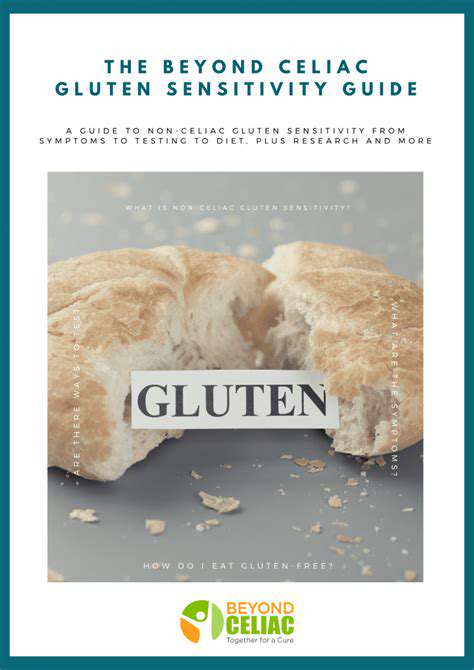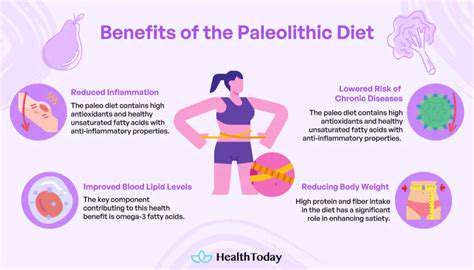Gluten Free Diet: Understanding the Basics
The presence of gluten in various foods, from bread and pasta to sauces and processed snacks, makes it a ubiquitous component of the modern diet. However, for individuals with celiac disease or gluten sensitivity, even trace amounts can trigger adverse reactions, highlighting the importance of understanding this protein's properties and its widespread presence in our food.
The Role of Gluten in Food
Gluten plays a vital role in many food products, contributing significantly to their texture and structure. In baked goods, it creates the elasticity needed for rising and the desired chewiness. In pasta, it provides the necessary firmness and holds the shape of the final product. Gluten's impact extends beyond these examples, influencing the texture of various processed foods and even some sauces and condiments.
Without gluten, many common foods would lack their characteristic texture and structure. This is why gluten-free alternatives often require specialized ingredients and processing techniques to achieve similar outcomes in terms of taste, appearance, and texture.
Gluten Sensitivity and Celiac Disease
Gluten sensitivity, often referred to as non-celiac gluten sensitivity (NCGS), is a condition where some individuals experience symptoms such as digestive issues, fatigue, and headaches after consuming gluten, even if they do not have celiac disease. The exact mechanism behind these reactions is not fully understood, but it's believed to involve an immune response.
Celiac disease, a more severe autoimmune disorder, causes the immune system to attack the lining of the small intestine when exposed to gluten. This damage can lead to nutrient deficiencies and a range of other health issues. Both gluten sensitivity and celiac disease require a strict gluten-free diet for symptom management and overall health.
Why is Gluten Important (in a broader sense)?
While crucial for many food products, gluten's importance extends beyond its role in food texture. Understanding its function in various foods is essential for the food industry in creating diverse and appealing products. The demand for gluten-free products has driven innovation in food science, leading to the development of new ingredients and processing techniques to create comparable alternatives to traditional gluten-containing foods.
Gluten-Free Alternatives and Their Impact
The increasing demand for gluten-free options has led to a significant rise in the development of gluten-free alternatives. These alternatives vary significantly in terms of taste, texture, and nutritional value compared to their gluten-containing counterparts. This has prompted the food industry to create new products and formulations to cater to the specific dietary needs of those following a gluten-free diet.
Consumers are increasingly opting for gluten-free products, showcasing the growing awareness of dietary requirements and preferences. The availability of gluten-free alternatives is impacting the food industry and consumer choices.
Common Gluten Sources: Beyond the Obvious

Common Gluten Sources in Food
Gluten, a protein found in wheat, barley, and rye, is a common allergen and dietary restriction for many. Understanding where gluten hides in our food is crucial for those following a gluten-free diet. This often extends beyond the obvious culprits like bread and pasta.
Processed Foods and Additives
Many processed foods contain hidden gluten. Manufacturers often use wheat flour or gluten-containing ingredients as thickeners, stabilizers, or texturizers. Pay close attention to ingredient labels, as even small amounts of gluten can trigger a reaction in sensitive individuals.
Additionally, some food additives and flavorings might contain gluten-derived components.
Grains Beyond the Usual Suspects
Beyond wheat, barley, and rye, other grains can contain gluten. For example, some beers, malt syrups, and certain types of sauces can contain barley as an ingredient. It's important to research the specific ingredients of these items.
Hidden Gluten in Condiments and Sauces
Many condiments and sauces, often used as everyday staples, can harbor hidden gluten. Some soy sauces, Worcestershire sauces, and salad dressings might contain wheat-based ingredients as stabilizers or thickeners. Thorough ingredient checking is vital for maintaining a gluten-free lifestyle.
Gluten in Medications and Supplements
Surprisingly, some medications and supplements can contain gluten as a filler or binding agent. Carefully review the ingredient list for these products, as they can be a significant source of unexpected gluten exposure. Speak with your pharmacist or healthcare provider about possible gluten-containing components in specific prescriptions.
Gluten in Certain Alcoholic Beverages
Many alcoholic beverages, including some types of beer, malt whiskeys, and certain liqueurs, might contain gluten. The presence of gluten in these beverages is often due to the use of barley in the brewing process. Individuals with gluten sensitivities need to be mindful of such hidden sources when selecting alcoholic drinks.
Gluten-Containing Food Packaging Materials
While less common, some food packaging materials can contain gluten. In particular, certain types of paper or adhesives used in packaging might contain wheat-based components. While this is rare, it's still important to be aware of potential cross-contamination risks. This underscores the importance of thorough food preparation practices and careful label reading.
Implementing RFID technology fosters unparalleled visibility throughout the supply chain, enabling real-time tracking of goods from origin to final destination. This heightened transparency provides stakeholders with crucial insights into inventory levels, location, and movement, allowing for proactive adjustments and minimizing delays. Companies can pinpoint bottlenecks, optimize resource allocation, and reduce the likelihood of stockouts or overstocking, ultimately leading to more efficient operations and cost savings.
Beyond the Diet: Understanding the Health Implications
Beyond the Initial Restrictions: Long-Term Considerations
Adopting a gluten-free diet initially often focuses on the immediate removal of gluten-containing foods, like bread, pasta, and certain cereals. However, Long-term success hinges on a nuanced understanding of the potential implications for overall health. This goes beyond simply avoiding gluten and delves into the importance of nutritional balance, ensuring adequate intake of essential vitamins and minerals that might be compromised by a restrictive diet. A comprehensive approach, which includes careful meal planning and potentially consulting a registered dietitian, is crucial for long-term well-being and avoiding deficiencies.
Furthermore, the long-term implications extend to addressing potential psychological aspects of dietary restrictions. Sustaining a gluten-free lifestyle requires careful consideration of social situations, travel, and potential emotional challenges related to dietary limitations. Maintaining a positive mindset and seeking support from a community or healthcare professional can greatly enhance the chances of successful long-term adherence.
Nutritional Deficiencies and Potential Risks
Gluten-free diets, while beneficial for those with celiac disease or gluten sensitivities, can carry the risk of nutritional deficiencies if not meticulously planned. Essential nutrients like iron, calcium, and B vitamins are often found in gluten-containing grains. Carefully choosing gluten-free alternatives and ensuring adequate intake from other food groups is crucial to avoid deficiencies, which can manifest in various ways, from fatigue to more serious health issues. Careful monitoring and supplementation, as recommended by a healthcare professional, might be necessary for some individuals.
The potential for nutrient imbalances necessitates a proactive approach to dietary planning. Individuals adopting a gluten-free diet should prioritize diverse food sources and consider incorporating supplements under the guidance of a healthcare provider to address any potential deficiencies.
The Importance of Dietary Diversity
A gluten-free diet, while necessary for some, should not equate to a monotonous or restrictive eating plan. Maintaining a balanced and diverse diet rich in fruits, vegetables, lean proteins, and healthy fats is paramount for overall health and well-being. Focusing on a wide range of nutrient-rich foods, even within the gluten-free framework, is vital for optimal health outcomes and preventing any potential deficiencies that may arise from limited food choices.
Gluten-Free Alternatives: Quality and Safety
The availability of gluten-free alternatives has significantly increased, but the quality and safety of these products vary greatly. Thoroughly reading labels, understanding processing methods, and ensuring the gluten-free certification of products are essential to avoid potential cross-contamination or hidden gluten sources. Carefully evaluating the nutritional content of gluten-free alternatives, and comparing them to their traditional counterparts, is crucial to make informed choices that support overall dietary needs.
Beyond the Symptoms: Addressing Underlying Issues
For individuals experiencing symptoms related to gluten sensitivity or celiac disease, a gluten-free diet can be a crucial step in managing those symptoms. However, a comprehensive approach should also consider potential underlying health conditions or contributing factors. Addressing any underlying digestive problems, stress levels, or other health concerns is essential for a holistic approach to managing any digestive discomfort or other symptoms associated with gluten sensitivity.
Consulting with a healthcare professional can help determine if other conditions may be contributing factors and how to address them in conjunction with a gluten-free diet. A doctor can help determine if additional testing or interventions are necessary.
Social and Lifestyle Implications
Adopting a gluten-free lifestyle can present unique challenges in social situations, especially when dining out or attending gatherings. Understanding how to communicate dietary needs effectively and finding ways to navigate social events while maintaining adherence to the diet are important skills to develop. This involves educating others about gluten-free choices, learning to read restaurant menus and labels with a critical eye, and potentially preparing meals for social situations to maintain control over ingredients.











